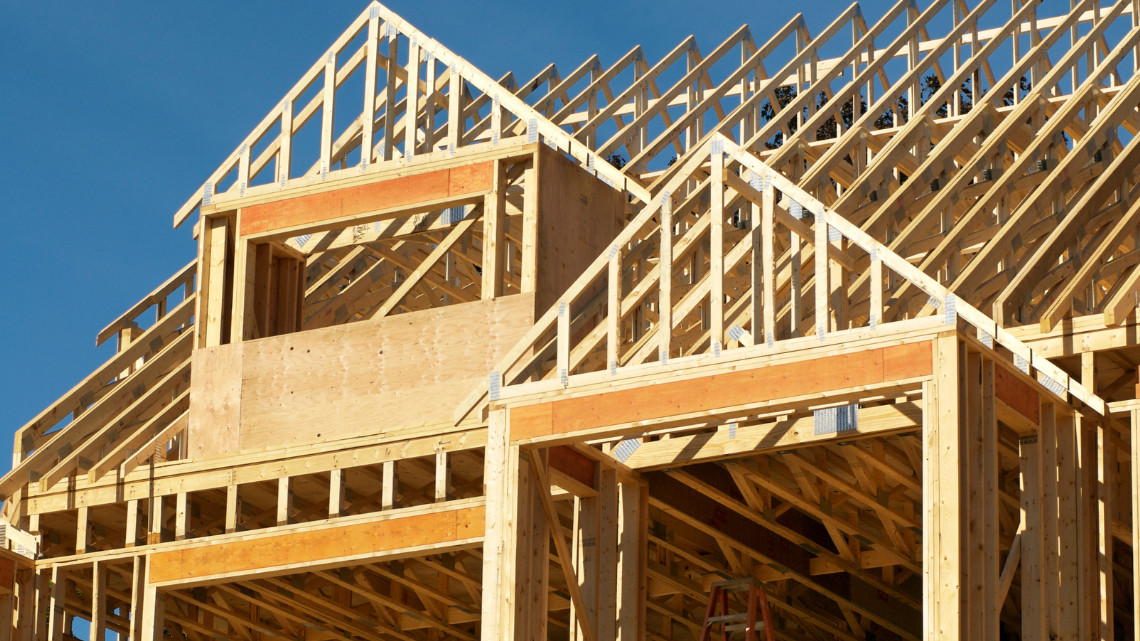
The number of single-family home building permits pulled last year in Michigan is about a third of what it was in 2005, and it’s not because the need isn’t there.
Home builders told a House committee earlier this month that too many people are being squeezed out of the market. Building a home is too expensive for most people to swing these days.
They’re calling on lawmakers to cut in half the regulatory costs of building a new home, which they believe will drop the price of a new home by $47,000 and open up the market to thousands of people who simply can’t afford a new stick-built home.
Livonia builder Robert Donovic told the House Regulatory Reform Committee that in 2023, he could build and sell a home for roughly $375,000 a piece.
“A few years later, you’re almost at $450,000,” he said. “That’s a lot of money, and not everybody can afford that.”
Three main issues are driving the rise in costs, according to Dawn Crandall of the Michigan Homebuilders Association – materials, labor and regulations. There’s not much the state government can do about the first two. Materials and labor are driven by supply-and-demand issues.
The regulations? That’s something different. Crandall said that the national average put the regulatory costs at $94,000 per home. That’s your zoning approvals, compliances, land, dedications, setbacks, etc.
In order to qualify for financing on a $450,000 new house, a family needs to be pulling in $143,500 a year, which was up from $119,000 in 2023. And every time the cost of a home is raised another $1,000, 3,222 households are priced out of the market, Crandall said.
“We can’t continue to build housing for anyone in a reasonable price range when we have to spend $90,000 in fees and regulation,” said John Bitely of Sable Homes.
Bitely conceded to the House panel that he didn’t believe the $94,000 number of new home regulations was real. He personally questioned the Home Builders Association. He told them, “You gotta give us something real. This can’t be the real number. It looks inflated.”
So, Bitely spent three days looking into the costs of his own projects. What he found surprised him.
“I was within 1% (of $94,000),” he told lawmakers. “And I’m from West Michigan. I’m in what is considered a less regulatory area than some other parts of the state, and especially in the country, and I was at those numbers. So they’re real.”
One of the biggest requirements he’s facing is the need in some communities to have a basement. Bitely said with today’s products, such as the Shallow Frost Protection System, it’s possible to build a home in Michigan on a slab of concrete, which is a savings of between $25,000 and $40,000 alone. Getting rid of the basement requirement also opens up numerous parts of the state to manufactured housing, which isn’t an option for everyone due to zoning and other local restrictions, Bitely said.
Donovic said today’s new homes are built too well – with the materials and the plumbing codes and the electrical codes and the rest – that homes can’t breathe. He said he understands the point of many of the regulations and isn’t proposing getting rid of them, but “there needs to be a balance.”
Over at the Michigan Municipal League, city officials are not debating the regulation question. At its last conference, participants were asked what their municipality’s greatest hurdle to housing development was. The No. 1 issue was lack of vacant land that could be built on. No. 2 was lack of builders. After that, outdated zoning regulations were in the mix, said Jennifer Rigterink of the Michigan Municipal League to the House Regulatory Reform Committee last week.
Often, it’s not the regulations itself that is the issue, Rigterink said. It’s NIMBY (Not In My Back Yard) community members who pop out of the woodwork when someone applies for a variance or a change in these regulations. The appointed members of planning committees, the local Board of Zoning Appeals, etc. see a bunch of angry people standing in front of them and they buckle.
“We haven’t had a lot of stories from our members where people are coming from out of town to protest housing,” she said. “It’s those who live in the community. It’s those who have lived next to a green lot with trees, and they don’t want that tree cut down because it’s providing oxygen to their neighborhood, and they don’t have a lot of other green space.
“It’s those kinds of things where fears and misinformation are guiding community members.”
Rigterink also reported that 84% of her members responding to a survey said they are updating their zoning regulations to address housing development in their communities. She also suggested state investment in housing as part of a multipronged approach to tackle the housing shortage from several different fronts.
“We don’t want to be on opposite sides,” she said. “We want to be at the table, not on the table as discussions around housing are happening.”
House Regulatory Reform Committee Joseph Aragona (R-Clinton Township) said he and Rules Committee Chair Bill G. Schuette (R-Midland) are still in the discovery phase of looking at ways to “cut red tape” and clear the regulatory landscape for housing and business, in general.
With House Speaker Matt Hall (R-Richland Township) putting regulation reform as the No. 2 item on his spring agenda on Wednesday and Gov. Gretchen Whitmer proposing regulatory reform in her State of the State, Aragona said he’s ready to go.
“You want to cut red tape? We’re your guys,” he said. “We’re ready to go.”
Article courtesy MIRS News for SBAM’s Lansing Watchdog newsletter
Click here for more News & Resources.